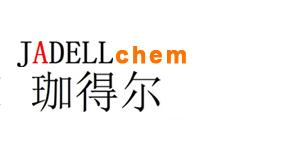Recombinant Human Insulin-like Growth Factor-Binding Protein 3 属于胰岛素样生长因子结合蛋白家族,能够延长胰岛素样生长因子的半衰期,阻止胰岛素样生长因子与其细胞表面受体的相互作用,同时可以降低癌症的发生。
Synonyms
rHuIGF-BP3; IBP-3; IGF-binding protein 3; IGFBP-3 ; 重组人胰岛素样生长因子结合蛋白 3
Species
HumanSource
E. coli Accession
P17936 Gene ID
3486 Molecular Weight
Approximately 28.8 kDa AA Sequence
GASSGGLGPV VRCEPCDARA LAQCAPPPAV CAELVREPGC GCCLTCALSE GQPCGIYTER CGSGLRCQPS PDEARPLQAL LDGRGLCVNA SAVSRLRAYL LPAPPAPGNA SESEEDRSAG EVESPSVSST HRVSDPKFHP LHSKIIIIKK GHAKDSQRYK VDYESQSTDT QNFSSESKRE TEYGPCRREM EDTLNHLKFL NVLSPRGVHI PNCDKKGFYK KKQCRPSKGR KR Biological Activity
The ED50 is <200 ng/mL as measured by serum free human MCF-7 cells, corresponding to a specific activity of >5.0 × 103 units/mg. Appearance
Lyophilized powder. Formulation
Lyophilized after extensive dialysis against PBS, pH 7.4. Endotoxin Level
<1 EU/μg, determined by LAL method. Reconstitution
Reconstitute the lyophilized recombinant Human Insulin-like Growth Factor-Binding Protein 3 (rHuIGF-BP3) to 0.1-1.0 mg/mL using sterile distilled water or aqueous buffer containing 0.1 % BSA. Storage & Stability
Lyophilized recombinant Human Insulin-like Growth Factor-Binding Protein 3 (rHuIGF-BP3) is stored at -20°C. After reconstitution, it is stable at 4°C for 1 week or -20°C for longer. It is recommended to freeze aliquots at -20°C or -80°C for extended storage. Shipping
Room temperature in continental US; may vary elsewhere. Background
Insulin-like Growth Factor-Binding Proteins (IGFBPs) modulate the actions of secreted insulin-like growth facts (IGFs) by binding to them and increase the IGF halflife in the extracellular milieu and circulation by sequestering them in this bound form. IGFBPs either enhance or inhibit IGF actions on target cells; the individual IGFBPs either inhibit or potentiate IGF effects on osteoblasts in bone[1]. Insulin-like Growth Factor-Binding Protein 3 (IGFBP3) is involved in prolonging the half-life of the IGFs (from 12 minutes to 12 hours), inhibits interaction of IGFs with their cell surface receptors, as well as, it is a circulating reservoir of IGFs. Moreover, IGFBP3 functions in cancer reduction, by both IGF-dependent and IGF-independent mechanisms. IGFBP3 has been shown to reduce the risk of breast cancer in high doses. A high concentration of IGFBP3 prevents IGF1:IGF1R interaction and blocks the IGF1R tyrosine kinase activity, resulting in the inhibition of the formation of intracellular signaling cascades[2]. |



